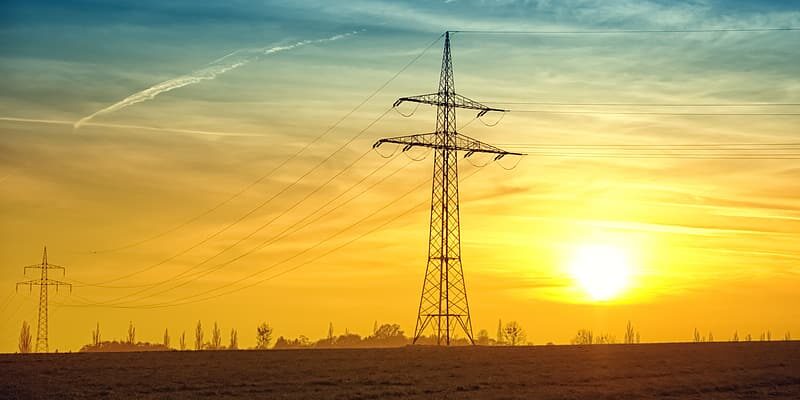Utilities created this crisis, now they want a payday
Pennsylvania families are feeling the financial pain of higher grocery and housing costs. Now, they’re facing another hit: rising electric bills. Utilities in our state have quietly driven up costs through years of “gold-plating” infrastructure projects, investing more than necessary in the grid because they’re guaranteed a return on every dollar of capital they spend. This leaves families to pay for bloated budgets and unnecessary upgrades, while utility executives promise ever-higher profits to investors on Wall Street. The result is higher bills for households across the state.
For working families, these aren’t abstract numbers. They’re dollars drained from paychecks every month. Utilities helped cause the very crisis they now claim they can solve. Instead of prioritizing affordability, they padded their rate base with questionable projects designed to maximize shareholder profit. Now, as data centers surge in Pennsylvania, utilities are pointing fingers at the energy market while quietly launching their own ventures to profit.
Consider PPL Electric Utilities in eastern and central Pennsylvania. Just months after warning customers about higher bills, its parent company partnered with Blackstone to launch a massive new gas-fired generation venture targeting data center demand in Pennsylvania. It’s a perfect example of utilities playing both sides: they profit from rising demand while asking lawmakers to rewrite the rules so they can expand their monopoly power into generation.
If transmission and delivery companies like PPL Electric Utilities and PECO in southeastern Pennsylvania had done their jobs by modernizing the grid responsibly rather than gold-plating projects, families wouldn’t be facing such high monthly bills. Instead, utilities are using rising bills as political cover to argue for a return to monopoly-owned generation, undoing decades of consumer protections. Experts warn this scheme would shift more risk and cost to ratepayers, while guaranteeing profits for utilities and their shareholders. It’s the worst of both worlds: higher bills and less accountability.
Utilities are also trying to spin the crisis with soft messaging. PPL’s own blog post telling customers to “understand higher costs” reads less like an explanation and more like a shrug. In addition, the company’s news site urges lawmakers to “put the power back in Pennsylvania”, which is code for letting them re-enter generation and expand their monopoly. Families don’t need cliches. They need affordable electricity.
Meanwhile, the CEO of Exelon Corporation, which owns PECO, claims that if laws are rewritten to allow utilities to build consumer-subsidized power plants, it will reduce costs and spur innovation, when in reality the opposite is true. This, after PECO slapped customers with a ten percent electric rate increase (and 12.5 percent gas rate increase) earlier this year, with further increases planned for 2026.
Solutions should not involve handing utilities a blank check. The state should promote competition in generation markets and demand accountability and transparency for every dollar that utilities have raked in from ratepayers.
Utilities love to present themselves as the only adults in the room, but Pennsylvanians know better. This crisis wasn’t an accident. It was manufactured through a business model that rewards overbuilding, overspending, and passing costs onto working families.
Lawmakers should reject this cynical power play by monopoly utilities. Pennsylvania’s energy future should be about affordable, reliable power, not utilities profiting off the mess they helped create.





The shutdown of coal-fired power plants in Pennsylvania is the main reason for rising electric costs primarily by reducing supply and increasing reliance on natural gas, which has made the grid more vulnerable to price fluctuations. Multiple coal plant closures, driven by competition from cheaper natural gas, rising coal costs, and ESPECIALLY environmental regulations—including policies like the Regional Greenhouse Gas Initiative (RGGI)—have led to a loss of baseload power and increased pressure on remaining generation sources.
PJM Interconnection, which manages the regional grid, projects the retirement of at least 40,000 MW of generation by 2030 due to these retirements, contributing to a supply-demand imbalance that has significantly increased capacity costs. If Data centers drive demand up, and supply is simultaneously shrinking… prices are going to rapidly increase.
The most recent PJM auction for 2025–2026 capacity prices jumped to $14.7 billion from $2.4 billion, a rise attributed in part to the accelerated retirement of coal plants across the region.
While natural gas has replaced much of the lost coal capacity—now supplying nearly 60% of Pennsylvania’s electricity—the state’s heavy dependence on a single fuel source, combined with infrastructure costs and export-driven markets, has prevented residents from seeing lower bills despite abundant local production.
Years ago, the song and dance from the utilities and the state was that competition will ensue from separating generation from transmission. Competition among generators would keep prices low and regulation of transmission and distribution would stabilize these costs at the most economic level. Now we are told we must go back to the bad, inefficient days of combined transmission, distribution and generation because it is the electric unicorn who will give us the least cost electricity. I guess the view is the ratepayers in Pennsylvania just came into town on a turnip truck. Of course, shrinking supply against rising demand will cause price increases, but giving generation authority to transmission/distribution companies isn’t the answer. Why return to an obsolete business model? It is easy to see that once generation is given to the transmission/distribution companies, the push will be on bar suppliers from outside Pennsylvania by either rate regulation or plain deny them a license to operate in Pennsylvania.
It’s frustrating to see how utilities are handling this crisis. Families are already struggling with rising costs, and now this adds more pressure. There needs to be more accountability!